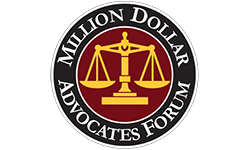Our vehicles are equipped with a number of safety features that are designed to protect us in the event of a crash. One of those features is the seat belt. When they work properly, seat belts are one of the most important devices in automobiles. There are instances, however, where these belts fail. When this happens, the consequences can be devastating. If you find yourself or a family member in a situation like this, our Baltimore seat belt failure lawyers are here to explain your legal rights and options.
Because seat belts are so crucial, Maryland, like most states, has a specific law that informs individuals how they are legally supposed to wear one. They have a primary seat belt law for front seat occupants and a secondary law for back seat occupants. According to Statute 22-412.3, all drivers and passengers are required to wear a seat belt regardless of their location in the vehicle. If this law is disregarded, a ticket and subsequent fine can be issued.
Unfortunately, those requirements do not mean much when a seat belt is defective. That discovery typically isn’t made until after a wreck. If you’re looking to seek justice for your injuries that should have been prevented, our legal team is here for you.
What Causes Seat Belt Failure?
Auto passengers understandably rely on safety features like seat belts when a crash occurs. When those devices do not work properly, it’s likely the result of a manufacturing error. The following are the most common types of safety belt failure:
- Unlatching and False Latching. During an accident, a defective seat belt may become unlatched, which allows the latch plate to pull out of the buckle. False latching occurs when the latch plate appears to be inserted into the buckle, but it’s not actually engaged. This means that even the smallest amount of force could cause the buckle to release.
- Retractor Failure. The retractor is designed to lock the safety belt into place in the event of an accident, so the occupant doesn’t move. There have been instances where this device has failed and led to otherwise preventable injuries.
- Torn or Ripped Belt Webbing. The belt webbing, or the part that covers your body, is designed to withstand an accident without ripping or tearing. Unfortunately, when the material is compromised, this can happen.
- Excessive Spooling. This occurs when an excess amount of webbing is released during a wreck. Instead of the belt securing the occupant, the belt goes slack. This can be related to a failed retractor.
- Poor Design. The safest belt anchor location is on the vehicle’s seat; however, there are some that are located on the floor. This can be dangerous, especially in the event of a rollover.
- Software Defects. As technology advances, automobiles are increasingly reliant on computer-engaged safety features. Even seat belts are at risk of failure if the car’s computer software is defective.
What Injuries Are Associated with Seat Belt Failure?
Passengers in accidents involving defective seat belts are likely to sustain serious injuries, some of which can be life-changing. A vehicle occupant is more likely to make physical impact with parts of the car, like the doors, steering wheel, dashboard, seats, or windshield. This impact can contribute to head and brain trauma, spinal cord injuries, internal bleeding, pinched nerves, fractures, lacerations, bruising, and whiplash.
The recovery period depends on the significance of the injury. It’s important to remember if the seat belt has been installed and designed correctly, the sustained injuries would have been avoidable. Our attorneys at Belsky & Horowitz can prove that preventability factor, so your recovery isn’t burdened with medical bills.
How Are Seat Belt Defects Identified After an Accident?
The effectiveness and performance of a seat belt can be determined when examining the facts and particulars of an accident. If you believe any of the following are true regarding your accident, you’ll benefit from contacting one of our Baltimore seat belt failure lawyers as soon as you’re able:
- Both belted and non-belted occupants sustained injuries, serious or otherwise.
- Belted occupants sustained radically different injuries.
- The seat belt of an injured occupant was found to be loose-fitting.
- An occupant, who insists they were wearing a seat belt, was found un-belted after an accident.
- A driver or front seat passenger in a frontal collision made contact with the windshield.
- A belted occupant was found to be seriously injured, but the vehicle sustained limited structural damage.
- Serious injuries were sustained in a minor or moderate collision.
- The seat belt webbing is found torn, ripped, or pulled loose from its anchors.
Evidence that a seat belt failed could produce the grounds for a product liability case, as the defect is likely a result of a design or manufacturing mistake. Manufacturers and distributors have a responsibility to ensure their products are safe. In the event they are not, those entities should be held responsible for the damage they’ve caused. If an accident resulted in the loss of life and involved a failed safety belt, we can also help you with a wrongful death claim.
How Can a Seat Belt Failure Lawyer from Baltimore Help?
If you or a loved one has sustained serious injuries because of a defective vehicle restraint system, our car wreck lawyers are prepared to investigate your claim and take measures to ensure the negligent party is held accountable for their actions. You may be eligible for compensation that can aid with the financial burdens associated with the failed belt. Contact our office today for a free consultation.





